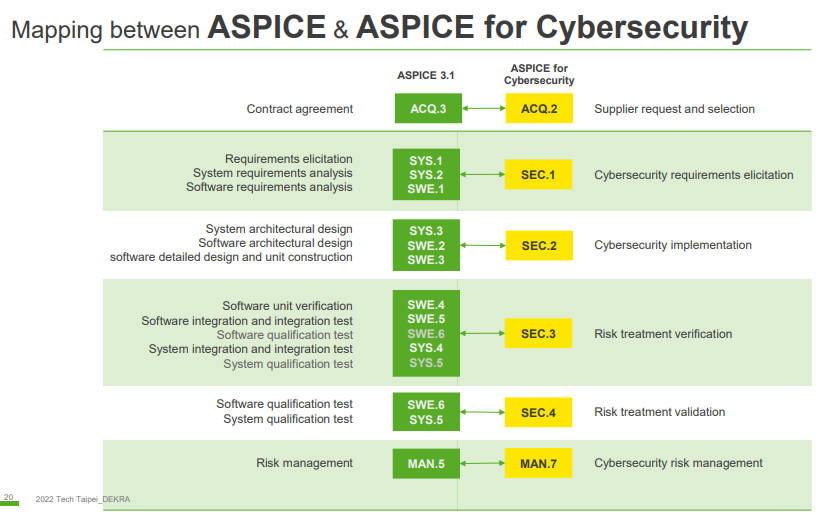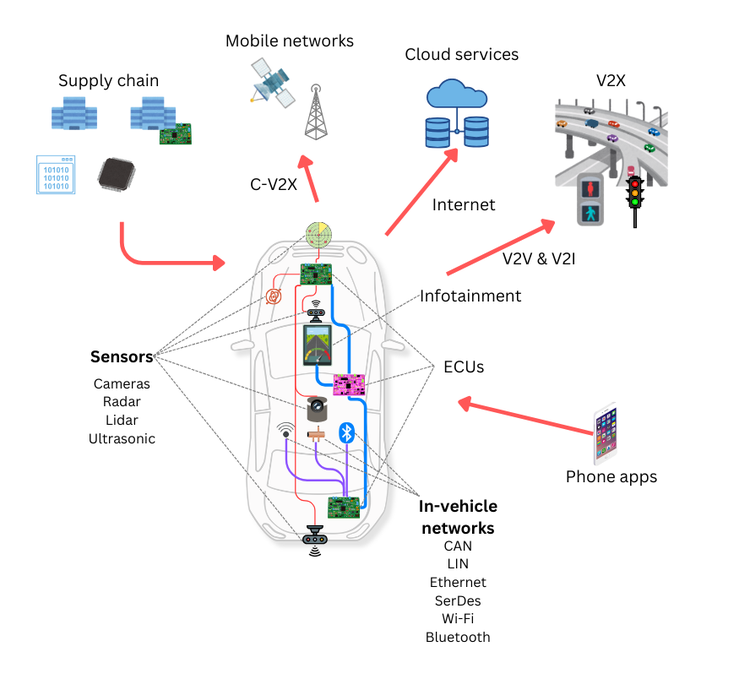Software-Defined Vehicles (SDV): Transforming Automotive Engineering with Systems Thinking and MBSE
The increasing connectivity and software-driven characteristics of vehicles has made cybersecurity a Security-Critical component of automotive and systems engineering, rather than only an IT issue. Features like as V2X (Vehicle-to-Everything) communication, autonomous driving, and OTA (Over-the-Air) updates are contributing to the rapid expansion of the attack surface, making vehicles more vulnerable to cyber threats (e.g., remote vehicle control, data theft, ransomware). To provide a structured method for managing cybersecurity risks in road vehicles, ISO/SAE 21434 was introduced. It ensures that security is integrated into every stage of the process, from development and design to manufacturing and post-market monitoring.
The process of cybersecurity cannot be isolated; it needs to be embedded into current software development and system engineering. Organizations can make sure that security operations correspond with process maturity by using ASPICE to map ISO 21434.

This includes:
- ● Threat Analysis and Risk Assessment (TARA) linked to system design and risk management
- ● Secure software development practices integrated into ASPICE SWE (Software Engineering) processes
- ● Continuous monitoring and incident response in line with SUP.1 (Quality Assurance) and MAN.5 (Risk Management).
The Importance: Cyber Resilience for the Future
Proactive risk management is the goal of automotive cybersecurity, rather than mere compliance. Innovation and security must coexist without sacrificing user experience or performance. As connected vehicles continue to grow, Cyber Resilience will be key in ensuring safe and secure mobility. Collaboration is essential – Building a safe and robust automotive ecosystem requires collaboration from OEMs, suppliers, and developers. Cybersecurity is a shared responsibility. A crucial component of cyber resilience is the capacity to quickly adjust to newly identified threats and vulnerabilities.

Many automobile developers use AUTOSAR to create these cyber-resilient systems. To enable safe communication between ECUs, AUTOSAR offers standardized modules for security features like cryptography, authentication, and secure communication. Though AUTOSAR offers a strong foundation, it’s crucial to keep in mind that it’s not a solution. Configuration, integration, and continuous security management remain crucial.
What’s your take on the future of automotive cybersecurity? Let’s discuss! 🚗🔐
How do you see ASPICE and ISO 21434 shaping the future of automotive security? Let’s discuss! 🚗🔐
#CyberSecurity #Automotive #ISO21434 #ASPICE #SystemsEngineering #ConnectedVehicles #CyberResilience
If you are interested in understanding how to adopt systems engineering and model based systems engineering practices within your organization, reach out to BlueKei Solutions team at info@Blue-Kei.com. We specialize in systems engineering consulting, project executions, process adoptions such as compliance to ISO15288, ARP 4754A, ISO 42020, digital transformations. We can also conduct capability development workshops which are experiential and tailored to your needs. With systems engineering adoption you can address the complexity, manage evolving risks and bring transformation in communication within your organization through digitalization and create the digital thread.

